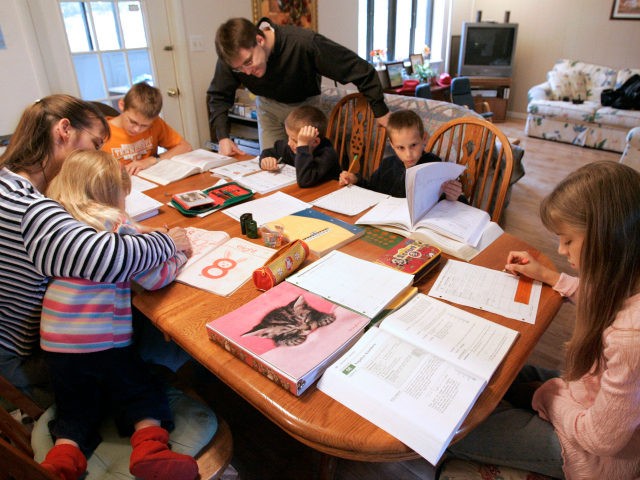More parents who experienced at-home learning with their children during the initial phase of the coronavirus shutdowns are opting to homeschool them as a regular education choice.
Texas Home School Coalition (THSC), for example, saw 15 times the number of public school families withdraw from public school to the homeschool option this past July through its website’s online withdrawal tool, compared to the number of families who withdrew in July 2019.
THSC’s tool automatically generates a withdrawal letter that allows families to conveniently notify school districts they are opting to homeschool.
According to a press release, in July 2019, THSC processed 201 withdrawals from public school. One year later, however, the homeschool advocacy group processed 3,114 withdrawals, a 15-fold increase.
“This is almost as many withdrawals as were processed in the 2019 calendar year, and this number represents only a portion of the total withdrawals statewide,” the group said, adding that data from the Texas Education Agency shows homeschool withdrawals “have increased seven percent annually on average over the last 20 years” in the state.
THSC President Tim Lambert said the surge in public school withdrawals is linked to parents’ “health concerns” about the coronavirus as well as “the substantial uncertainty and inconvenience involved with new back-to-school requirements.”
Education Week reported that, as of Wednesday, “73% of the 100 largest school districts, have chosen remote learning only as their back-to-school instructional model, affecting over 8 million students.”
The lack of flexibility in many public school districts has made homeschooling an “increasingly popular option for families looking for a safe, flexible and well-established form of education for their children,” Lambert said. “We will be here to support the tens of thousands of new families who are beginning homeschooling this year.”
A Gallup poll released at the end of August found a five-point increase in the percentage of parents who say they will homeschool their child this academic year, from five percent in 2019 to ten percent in 2020.
Gallup states it defined homeschooling in its survey as “not enrolled in a formal school, but taught at home” so as to distinguish homeschooling from remote learning programs provided by schools.
According to the poll, public school attendance has dropped seven points, from 83 to 76 percent since last year. Private school attendance has dropped from seven to six percent since last year, as parochial school attendance declined from four to two percent. Charter school attendance, however, saw an uptick from two to five percent.
Michael Horn, an executive editor at Education Next, observed that families are experimenting with various forms of education options that do not involve brick and mortar schools.
Some families, he noted, are enrolling in microschools, “which function as modern-day one-room schoolhouses and many of which use blended learning in their models.”
He wrote about homeschooling:
Nationwide, the National Home School Association expects the number of homeschooled students to increase to as much as 10 million in 2020–21, according to executive director J. Allen Weston. This past July, Nebraska’s homeschool filings spiked by 21 percent, while in North Carolina, so many parents filed online “notices of intent” to homeschool that the state website crashed.
Horn predicts the forced switch to alternative education models due to the pandemic will have some long-term consequences, at least, in part, due to the fact that “many students and families were not necessarily getting what they want from their children’s pre-pandemic school arrangements.”
Stephen Howsley, public policy analyst with THSC, said in a statement to Breitbart News that he believes they will see the 15-time increase in homeschooling in Texas “either remain the same or increase by the end of the summer.”
“The COVID-19 pandemic has been challenging and unprecedented,” he observed. Nonetheless, he said, “I believe that one of the greatest things to come out of it has been the increased time that parents have been able to spend with their children as they have homeschooled and stayed home with them.”

COMMENTS
Please let us know if you're having issues with commenting.